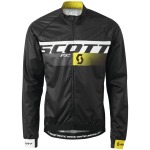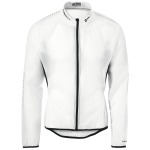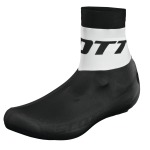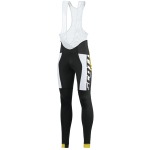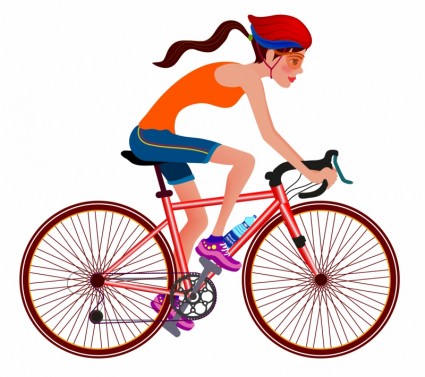Episode 98 of Talk Ultra is a packed show, we speak with Mike Wolfe about his epic Crown of Continent Traverse with Mike Foote. Shirt Leventhal, ladies winner of Atacama talks about racing multi-day races and Sarah Cameron tells us how cycling made her a excel at running. The News, Up and Coming Races and Niandi co-hosts.
00:01:35 Show Start
00:10:21 NEWS
Help Nepal – Nepal images ‘FACES of NEPAL’ – order a print and all funds donated to Nepal charities HERE
TRAINING CAMP in Lanzarote with Elisabet Barnes 28th Jan to Feb 4th HERE
TEMPLIERS
1 – Ellie Greenwood 7:58
2 – Jasmin Nunige 8:04
3 – Anne Lise Rousset 8:24
1 – Benoit Cori 6:44
2 – Nicolas Martin 6:47
3 – Tofol Castanyer 6:48
RAID DE LA REUNION
1 – Antoine Guillon 24:17:40
2 – Sebastien Camus 24:41:50
3 – Freddy Thevenin 25:17:48
1 – Nuria Picas 28:11:14
2 – Emelie Lecomte 28:12:32
3 – Andrea Husser 28:38:53 and on the last show we mentioned that she won UTAT
MOURNE SKYLINE MTR report and images HERE
1 – Ian Bailey 3:51:22 new CR
2 – Dan Doherty 4:04:07
3 – Eoin Lennon 4:07:45
1 – Diane Wilson 4:33:26
2 – Helen Brown 4:42:12
3 – Shilled O’Kane 4:50:19
UTWT 2015 Ranking
1 – Antoine Guillon
2 – Gediminas Grinius
3 – Freddy Thevenin
1 – Nuria Picas
2 – Dong Li
3 – Nathalie Maculair
AUTUMN 100 in the UK
1 – James Elson 14:35:40
2 – Chris Brookman 15:06:53
3 – Duncan Oakes 15:19:29
1 – Sarah Morwood 16:13:58
2 – Sally Ford 18:11:31
3 – Melissa Arkinstall 18:51:14
ENTRY FOR WESTERN STATES
Golden ticket races
BANDERA 100K
SEAN O’BRIAN 100K
BLACK CANYON 100K
GEORGIA DEATH RACE
GORGE WATERFALLS 100K
LAKE SONOMA 50K
UTMB
New points system 2016 will accept old and new but from 2017 new system only – http://ultratrailmb.com/fr/page/87/Liste%20des%20courses%20qualificatives.html
In summary old system required 9-points from 3-races for UTMB, new system will be 15-points from 3 races. CCC/ TDS was 3 from 2 and now 7 from 2 and OCC was 1 from 1 and now 3 from 2.
00:24:28 INTERVIEW
SHIRI LEVENTHAL
01:13:30 TALK TRAINING
with SARAH CAMERON check out Cycling for Runners HERE
01:56:40 INTERVIEW
MIKE WOLFE
CROWN OF THE CONTINENT TRAVERSE
Mike Wolfe and Mike Foote run an incredible 600-mile FKT from Missoula to Banff. We will have both Mike’s on the next Talk Ultra to tell us all about it. Read HERE
UP & COMING RACES
Argentina
Noroeste Argentina Trail – 100 km | 100 kilometers | November 03, 2015 | website
Noroeste Argentina Trail 50 km | 50 kilometers | November 03, 2015 | website
Puna Inca Trail | 200 kilometers | November 05, 2015 | website
Australia
New South Wales
Carcoar Cup Ultra Marathon | 60 kilometers | November 08, 2015 | website
Queensland
Run to Paradise Ultra Marathon | 74 kilometers | November 01, 2015 | website
Canada
Ontario
50 km | 50 kilometers | October 31, 2015 | website
Colombia
North Face Endurance Challenge Columbia – 50 km | 50 kilometers | November 01, 2015 | website
North Face Endurance Challenge Columbia – 50 km | 50 kilometers | November 01, 2015 | website
North Face Endurance Challenge Columbia – 50 km | 50 kilometers | November 01, 2015 | website
North Face Endurance Challenge Columbia – 50 km | 50 kilometers | November 01, 2015 | website
North Face Endurance Challenge Columbia – 80 km | 80 kilometers | November 01, 2015 | website
North Face Endurance Challenge Columbia – 80 km | 80 kilometers | November 01, 2015 | website
North Face Endurance Challenge Columbia – 80 km | 80 kilometers | November 01, 2015 | website
North Face Endurance Challenge Columbia – 80 km | 80 kilometers | November 01, 2015 | website
Estonia
Haanja Jala100 – 100 km | 100 kilometers | October 31, 2015 | website
France
Aveyron
Trail des Hospitaliers | 75 kilometers | November 01, 2015 | website
Marne
SPARNATRAIL classique | 55 kilometers | November 08, 2015 | website
Germany
Lower Saxony
KILL 50 | 50 miles | November 07, 2015 | website
North Rhine-Westphalia
Bottroper Herbstwaldlauf – 50 km | 50 kilometers | November 08, 2015 | website
Hong-Kong
Salomon LT 70 | 70 kilometers | October 31, 2015 | website
India
Karnataka
100 km | 100 kilometers | November 07, 2015 | website
50 km | 50 kilometers | November 07, 2015 | website
75 km | 75 kilometers | November 07, 2015 | website
West Bengal
Himalayan 100 Mile Stage Race | 100 miles | October 30, 2015 | website
Indonesia
Bromo Tengger Semeru 102K | 102 kilometers | November 06, 2015 | website
Bromo Tengger Semeru 170K | 170 kilometers | November 06, 2015 | website
Bromo Tengger Semeru 70K | 70 kilometers | November 06, 2015 | website
Martinique
Le Défi Bleu | 58 kilometers | November 07, 2015 | website
TransMartinique | 133 kilometers | November 07, 2015 | website
Morocco
150 km | 150 kilometers | November 05, 2015 | website
90 km | 90 kilometers | November 05, 2015 | website
Namibia
Desert Ultra | 250 kilometers | November 13, 2015 | website
Nepal
Everest Trail Race | 160 kilometers | November 08, 2015 | website
Manaslu Trail Race | 212 kilometers | November 10, 2015 | website
Solukhumbu Trail | 289 kilometers | October 30, 2015 | website
New Zealand
60 km | 60 kilometers | November 07, 2015 | website
Taranaki Steelformers 100 mile Around the mountain Solo | 100 miles | November 06, 2015 | website
Taranaki Steelformers 150 km Around the mountain Running and Walking Relay | 150 kilometers | November 07, 2015 | website
Oman
Oman Desert Marathon | 165 kilometers | November 06, 2015 | website
Peru
Amazon Race Forest 65k | 65 kilometers | November 08, 2015 | website
Portugal
Azores Triangle Adventure | 103 kilometers | October 30, 2015 | website
Trail Europe Croisière | 90 kilometers | November 04, 2015 | website
Sweden
Markusloppet | 50 kilometers | October 31, 2015 | website
United Kingdom
Derbyshire
Dusk’til Dawn Ultra | 50 miles | October 31, 2015 | website
Kirklees
White Rose Ultra 60 Mile | 60 miles | November 01, 2015 | website
Northamptonshire
Druids Challenge Ridgeway Multistage Ultra | 84 miles | November 06, 2015 | website
Stirling
Glen Ogle 33 Ultra | 33 miles | November 07, 2015 | website
Uruguay
ULTRA Maratón Altas Cumbres Serranas 100K Ultra | 100 kilometers | November 08, 2015 | website
ULTRA Maratón Altas Cumbres Serranas 60K Ultra | 60 kilometers | November 08, 2015 | website
USA
Alabama
Pinhoti 100 | 100 miles | November 07, 2015 | website
Arizona
100K | 100 kilometers | October 31, 2015 | website
Javelina Jundred 100 Mile Endurance Run | 100 miles | October 31, 2015 | website
California
CTR Lake Chabot Train Run 50 km (Nov) | 50 kilometers | November 07, 2015 | website
Rio Del Lago 100M | 100 miles | November 07, 2015 | website
Two Cities Ultra Marathon | 50 kilometers | November 01, 2015 | website
Florida
Regular Team (3-6 runners) | 50 miles | November 07, 2015 | website
Ultra Team (2 runners) | 50 miles | November 07, 2015 | website
Georgia
Georgia Sky to Summit 50k | 50 kilometers | November 07, 2015 | website
Illinois
Chicago Lakefront 50K | 50 kilometers | October 31, 2015 | website
Indiana
Owen Putnam State Forest 50K | 50 kilometers | November 07, 2015 | website
Owen Putnam State Forest 50 Miles | 50 miles | November 07, 2015 | website
Kansas
Kingman Kong Runathon 50K | 50 kilometers | October 31, 2015 | website
Massachusetts
Stone Cat 50 Mile | 50 miles | November 07, 2015 | website
Missouri
Ozark Trail 100 Mile Endurance Run | 100 miles | November 07, 2015 | website
Nevada
Bootlegger 50K | 50 kilometers | November 07, 2015 | website
Ragnar Relay Las Vegas | 195 miles | November 06, 2015 | website
New Jersey
NJ Trail Series One Day – 50K | 50 kilometers | November 07, 2015 | website
New York
Mendon 50K Trail Run | 50 kilometers | November 07, 2015 | website
Oklahoma
Turkey & Taturs 50K Trail Race | 50 kilometers | November 08, 2015 | website
Turkey & Taturs 50K Trail Race | 50 kilometers | November 08, 2015 | website
Oregon
50K Ultra | 50 kilometers | November 07, 2015 | website
Tennessee
Nashville Ultra Marathon 50 K Race | 50 kilometers | November 07, 2015 | website
Nashville Ultra Marathon 50 Mile Race | 50 miles | November 07, 2015 | website
Nashville Ultra Marathon 60 K Race | 60 kilometers | November 07, 2015 | website
Nashville Ultra Marathon 70 K Race | 70 kilometers | November 07, 2015 | website
Texas
50K | 50 kilometers | October 31, 2015 | website
Big Cedar Endurance Run 100 Miler | 100 miles | October 30, 2015 | website
Big Cedar Endurance Run 50K | 50 kilometers | October 30, 2015 | website
Big Cedar Endurance Run 50 Miler | 50 miles | October 30, 2015 | website
Muleshoe 50K | 50 kilometers | November 07, 2015 | website
Virginia
Mountain Masochist Trail Run | 50 miles | November 07, 2015 | website
Washington
First Call Veterans Day 50K (November) | 50 kilometers | November 07, 2015 | website
Vietnam
120 km | 120 kilometers | November 10, 2015 | website
70 km | 70 kilometers | November 10, 2015 | website
02:30:15 CLOSE
02:36:03
ITunes http://itunes.apple.com/gb/podcast/talk-ultra/id497318073
Libsyn – feed://talkultra.libsyn.com/rss
Website – talkultra.com




![Suunto_logo [ConveWHITE_rted]](https://iancorless.org/wp-content/uploads/2014/10/suunto_logo.jpg?w=150&h=90)








![Suunto_logo [ConveWHITE_rted]](https://iancorless.org/wp-content/uploads/2014/10/suunto_logo.jpg?w=300&h=181)



























